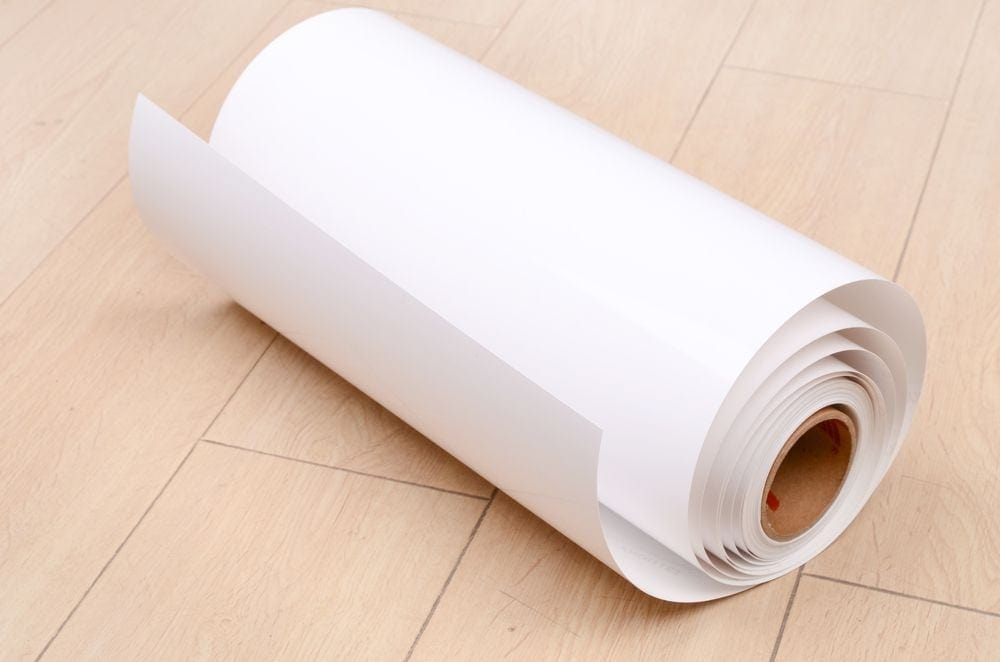
Roll of paper from Shutterstock
Filed under: Articles, Intranets, Usability
Intranet homepages are always contentious. In most organisations, every stakeholder would like a piece of this valuable real estate, and debates rage around the overall purpose and design.
Within the intranet industry, the homepage also inflames passionate debate. This is particularly true on the question of how long the intranet homepage should be.
In the earlier article Seven roles of the intranet homepage, a range of purposes were identified:
- news
- navigation
- key tools
- key information
- community and culture
- internal marketing
- collaboration
Effective designs find a productive balance between these seven roles, without any one being excessively dominant.
This turns out to be extremely difficult if the homepage is kept entirely ‘above the fold’, squeezed into a single screenful. Within this limited space, homepages often end up being mostly news with a little navigation squeezed into the edges. Internal marketing and a few key links round out the mix.
If the homepage is made longer, much more content and functionality can be included. This could increase the value of the page, and help to balance competing priorities.
But can it be made to work?
Long homepages are evil
Raising the possibility that intranet homepages can be longer than one screenful generates strong opinions. This was seen in a discussion on the LinkedIn ‘Intranet Professionals’ group.
In these types of discussions, many objections are made to having longer homepages, including:
- users don’t like to scroll
- content at the bottom of the page won’t be read
- good usability always means fitting content into a single page
- universal intranet homepage convention means no scrolling
- ‘we tried it, and it didn’t work’
These are all potentially valid points, but it is worth exploring them further.
Limits of short pages
If there is a widely adopted convention that intranet homepages don’t scroll, then why explore alternatives?
There is a single reason: how little can be squeezed into one screenful.
Staff come to intranets at the point of need, looking for a piece of information, or to complete a task. Intranets should therefore be task-based, focusing on supporting staff in their work.
The homepage plays a vital role in meeting staff needs. It is the entry point to the intranet, and where staff make their first click. But how well are these needs being met?
Fitting everything ‘above the fold’ entails many compromises. It is practically impossible to include elements of all seven roles, as listed above.
In practice, most homepages end up devoting most space to news. Navigation gets squeezed into the margins, with a small amount of global navigation and ‘quick links’.
Once space has been allocated to internal marketing and cultural aspects, there is little left.
Good design can help to make the most of available space, but the physical constraints of fitting everything within one screen remain.
This is one of the reasons why staff so often complain about not being able to find what they need. Even after a carefully thought-out redesign, many of these complaints continue.
Perhaps intranet homepages can do more to help staff find what they need, and to be directly useful in their own right?
Scrolling is not evil
Much has been written about the dangers of long scrolling pages. From the early days of the web, considerable effort has been put into keeping content ‘above the fold’. The expression comes from newspaper jargon, and refers to the upper part of the page, visible even the papers were folded and piled up.
Over time further research has been put into this issue, and the results may be startling. The key conclusion is that scrolling is not to be avoided at all costs, and in many cases causes few (if any) problems.
The article Blasting the myth of the fold provides a good summary of modern thinking:
Some of the observations made:
- If users reaches a page they are looking for, they are more than happy to scroll.
- If there is a clear reason and benefit to scrolling, users will do so.
- If there is a visible indication that the page continues below the fold, users will be encouraged to scroll.
These findings often relate to content pages, rather than navigation or homepages, but they are intriguing.
What they do categorically show is that scrolling is no longer ‘evil’, to be avoided at all costs. This opens up some new possibilities for the intranet homepage.
Newspapers online
On the public web, newspapers have taken a distinctly different approach to their homepages. As shown in the screenshot over the page, their pages are incredibly long.
Often 9,000 pixels long (many screenfuls) or more, they provide content from across the newspaper.
This gives immediate access to everything from national news and international updates to sport and fashion.
Media organisations devote considerable effort to the design of their sites, and any redesign is a massive (and well-publicised) effort. Post-launch, the sites are typically supported by large web teams.
These sites are also extensively tested and monitored. Results from this testing have trickled out into conferences and industry gatherings, and the findings are often surprising.
The news sites have typically found consistent usage all the way to the bottom of these immensely long homepages. In some cases, some of the most popular features are located at the bottom of the page.
It seems that users, knowing what they want, are happy to scroll down until they find it, supported by clear page design and layout.
Now we always argue strongly against ‘design by analogy’, taking a concept that works in the public space, and blindly copying it onto intranets. However, when the conventional wisdom is so strongly challenged, it’s worth looking more closely.
Making long pages work
Longer intranet homepages still need to follow good design principles if they are to work. These include:
- Make the homepage useful all the way to the bottom (for example, avoid just using space for longer lists of news items).
- Ensure the homepage is visually cut off at the bottom of the screen, so that staff know there is a reason to scroll.
- Group items on the page, with strong visual design (newspaper websites provide good exemplars of this).
- Communicate widely about the new design of the homepage, to ensure that staff understand what is being provided.
- Provide a mix of functionality on the page, using the available space to cover all seven roles of the homepage.





